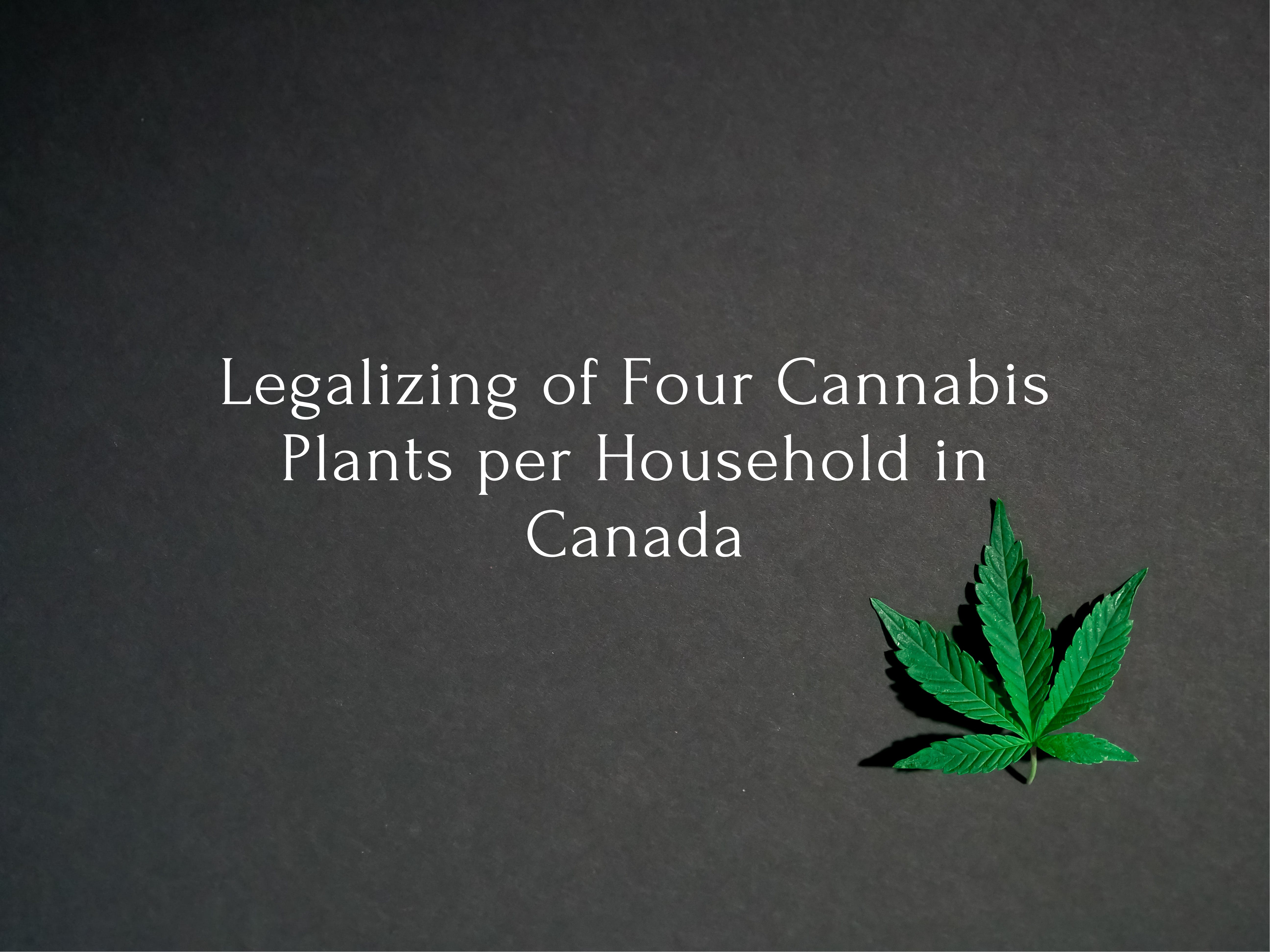Canada has been at the forefront of cannabis legalization, taking significant steps to decriminalise and regulate the recreational and medicinal use of cannabis. In recent years, there has been a growing movement to legalize the cultivation of a limited number of cannabis plants per household. In this blog, we will explore the implications and benefits of legalizing four cannabis plants per household in Canada, shedding light on the progressive approach towards personal cultivation.
The Current Legal Landscape in Canada:
To understand the significance of legalizing four cannabis plants per household, it’s important to review the existing cannabis laws in Canada. Since October 17, 2018, the federal Cannabis Act allows Canadian adults to possess up to 30 grams of dried cannabis or its equivalent in public. However, the laws surrounding personal cultivation vary across provinces and territories.
Empowering Individuals: Personal Freedom and Autonomy:
Legalizing the cultivation of four cannabis plants per household empowers individuals by granting them the freedom to grow their own cannabis. This step aligns with the principles of personal autonomy, allowing Canadians to exercise control over their cannabis consumption, strains, and cultivation methods. It fosters a sense of self-sufficiency and reduces reliance on the commercial market.
Economic Benefits:
- Cost Savings: Allowing households to grow their own cannabis can result in substantial cost savings. Purchasing cannabis from licensed producers or retail outlets can be expensive, especially for those requiring consistent medicinal use or individuals who prefer premium strains. By cultivating their own cannabis, Canadians can eliminate the financial burden associated with purchasing from the market.
- Economic Growth: Legalizing personal cultivation promotes economic growth at the grassroots level. It stimulates the demand for cultivation supplies, equipment, and services, providing opportunities for local businesses and entrepreneurs. This decentralised approach fosters economic diversity and contributes to job creation within the cannabis industry.
Health and Safety Considerations:
- Quality Control: Personal cultivation allows individuals to have direct control over the cultivation process, ensuring the quality and safety of the cannabis they consume. By growing their own plants, Canadians can choose organic cultivation methods, control pesticide use, and avoid potential contaminants, promoting a healthier and safer cannabis experience.
- Medicinal Benefits: For medical cannabis users, the ability to cultivate their own plants is of paramount importance. It ensures a reliable supply of specific strains tailored to their individual needs, including cannabinoid profiles, terpene compositions, and personalized dosage requirements. This personalization can enhance the therapeutic benefits and overall well-being of patients.
- Harm Reduction: Legalizing personal cultivation can contribute to harm reduction strategies. It provides an alternative for individuals who may otherwise resort to purchasing from the illicit market, which may be associated with quality and safety concerns. Personal cultivation reduces the reliance on unregulated sources, promoting responsible consumption practices and minimising potential risks associated with unknown product origins.
Social Equity and Accessibility:
- Reducing Disparities: Legalizing personal cultivation addresses social equity concerns by reducing disparities in cannabis access. It ensures that individuals, regardless of their geographical location or socioeconomic status, have the opportunity to cultivate and consume cannabis for recreational or medicinal purposes. This inclusive approach promotes equality and reduces barriers to access.
- Bridging Supply Gaps: Legalization of personal cultivation helps bridge supply gaps, particularly in regions where there may be limited access to licensed cannabis retailers or producers. This is especially relevant for remote communities, where the establishment of cannabis outlets may not be financially viable. Personal cultivation provides a self-sustaining solution for individuals in such areas.
Regulation and Compliance:
- Plant Quantity Limits: Legalizing four cannabis plants per household establishes clear guidelines for personal cultivation. By setting reasonable limits, regulators can strike a balance between allowing personal cultivation and preventing potential abuse or diversion to the illicit market. These limits also facilitate effective monitoring and enforcement by regulatory bodies.
- Cultivation Standards: Legalization of personal cultivation can be accompanied by regulations and guidelines regarding cultivation practices. This ensures that cannabis is cultivated safely, adhering to environmental standards and proper cultivation techniques. Implementing these standards promotes responsible cultivation practices and minimises the risk of negative environmental impacts.
- Security Measures: Personal cultivation laws can include requirements for security measures to prevent unauthorised access and potential misuse. This can involve measures such as secure storage of plants, restricting access to cultivation areas, and ensuring compliance with safety protocols. These measures help maintain public safety and prevent the diversion of cannabis to unauthorised individuals.
Conclusion:
The legalization of four cannabis plants per household in Canada represents a progressive step towards personal cultivation. It empowers individuals, promotes personal freedom, and fosters economic growth. By allowing Canadians to grow their own cannabis, it facilitates cost savings, ensures quality control, and enhances accessibility for both recreational and medicinal users. Moreover, it addresses social equity concerns by reducing disparities in access and bridging supply gaps in undeserved areas. Through appropriate regulation and compliance measures, personal cultivation can be carried out responsibly, minimising potential risks and promoting a safe and sustainable cannabis culture. As Canada continues to evolve its cannabis laws, the legalization of personal cultivation serves as an essential component of a comprehensive and inclusive cannabis framework.
If you’re interested in the latest research findings on Cannabis Clones, our articles on Terpenes: The Hidden Gems in Cannabis Strains, Unveiling The Calming Power of Limonene in Cannabis, and Easy Cannabis Strains for New Growers provide valuable insights.
For a deeper dive into Cannabis Economics, we’ve covered it extensively in our previous article on How Can Cannabis Clones Save Me Money and Time.













